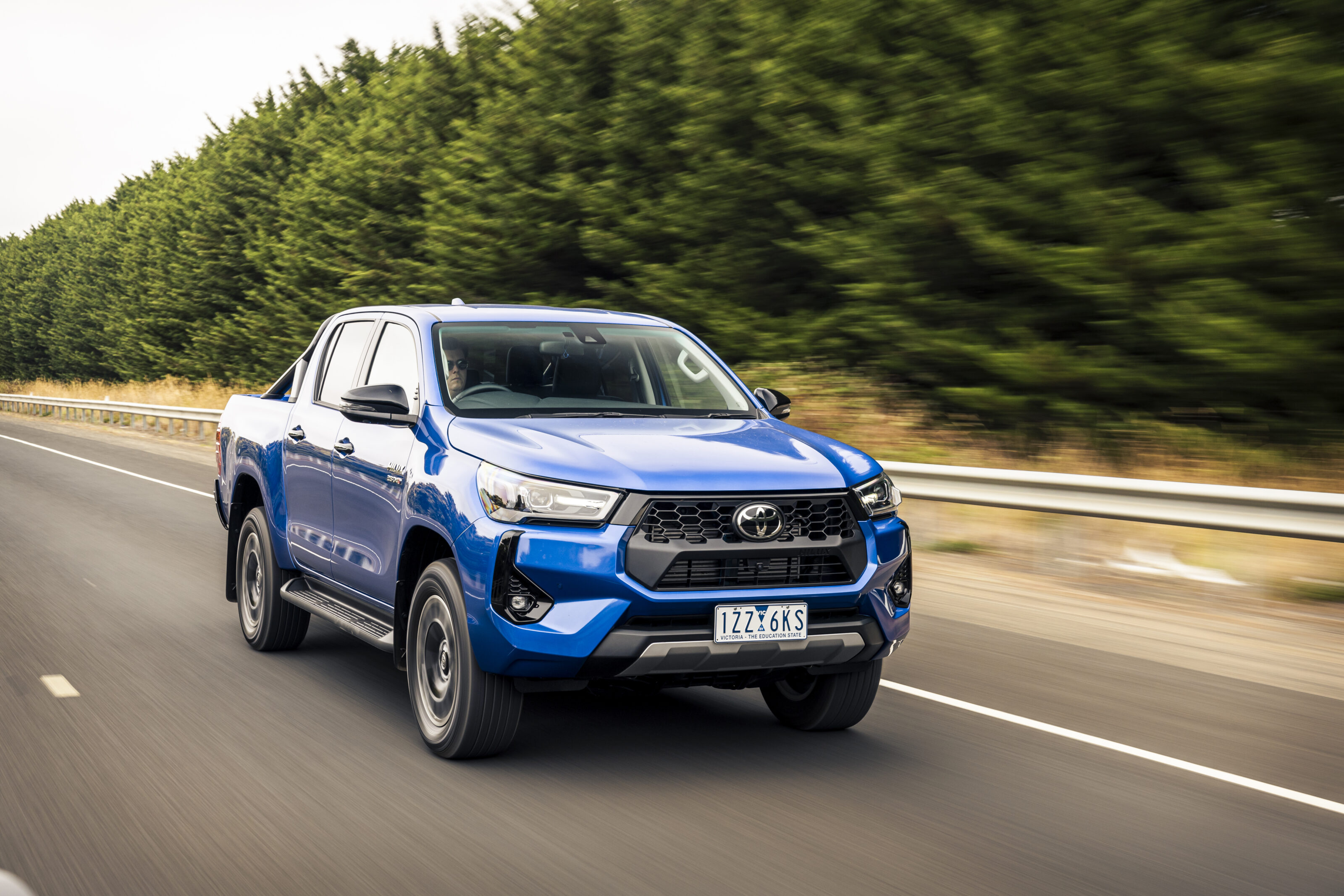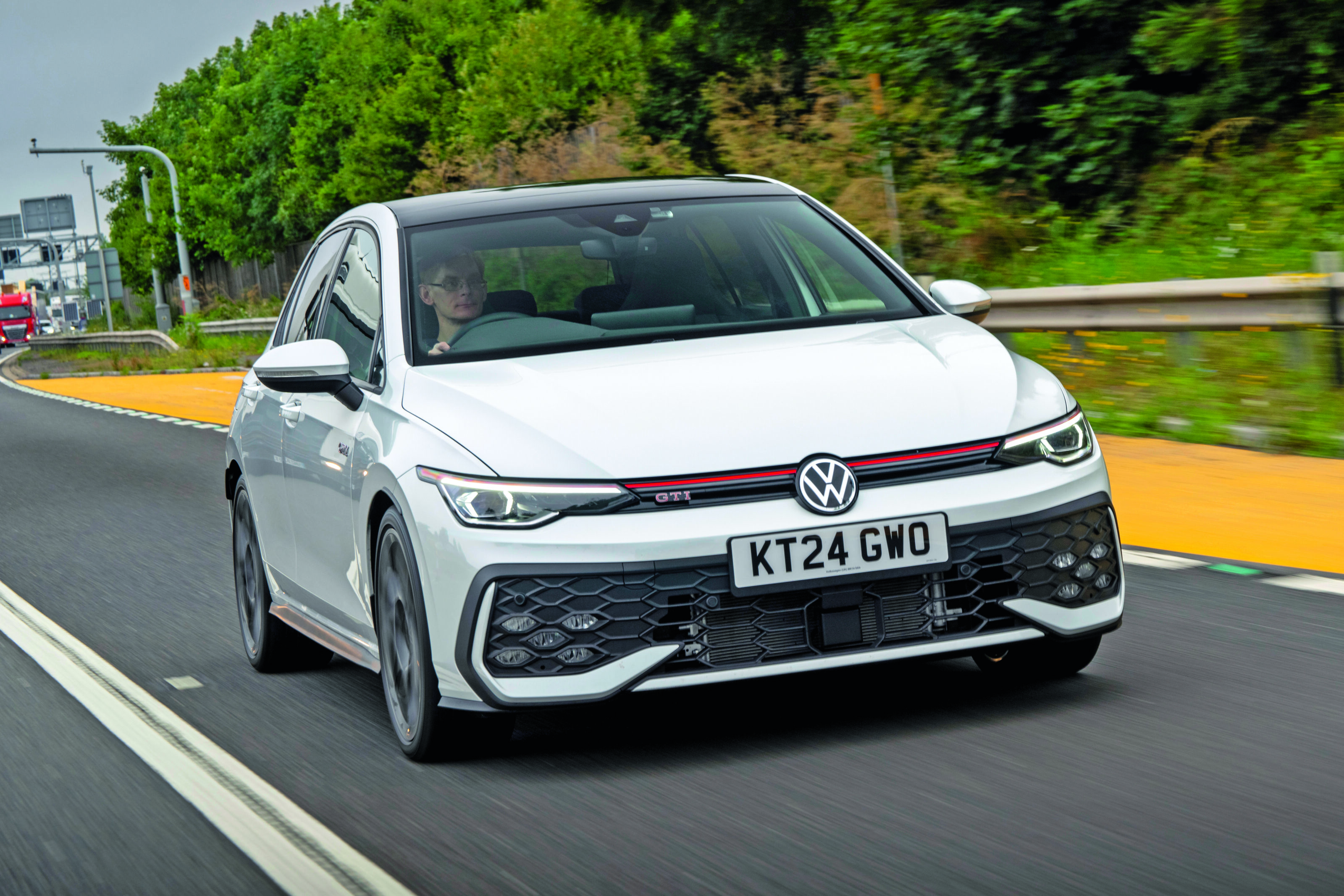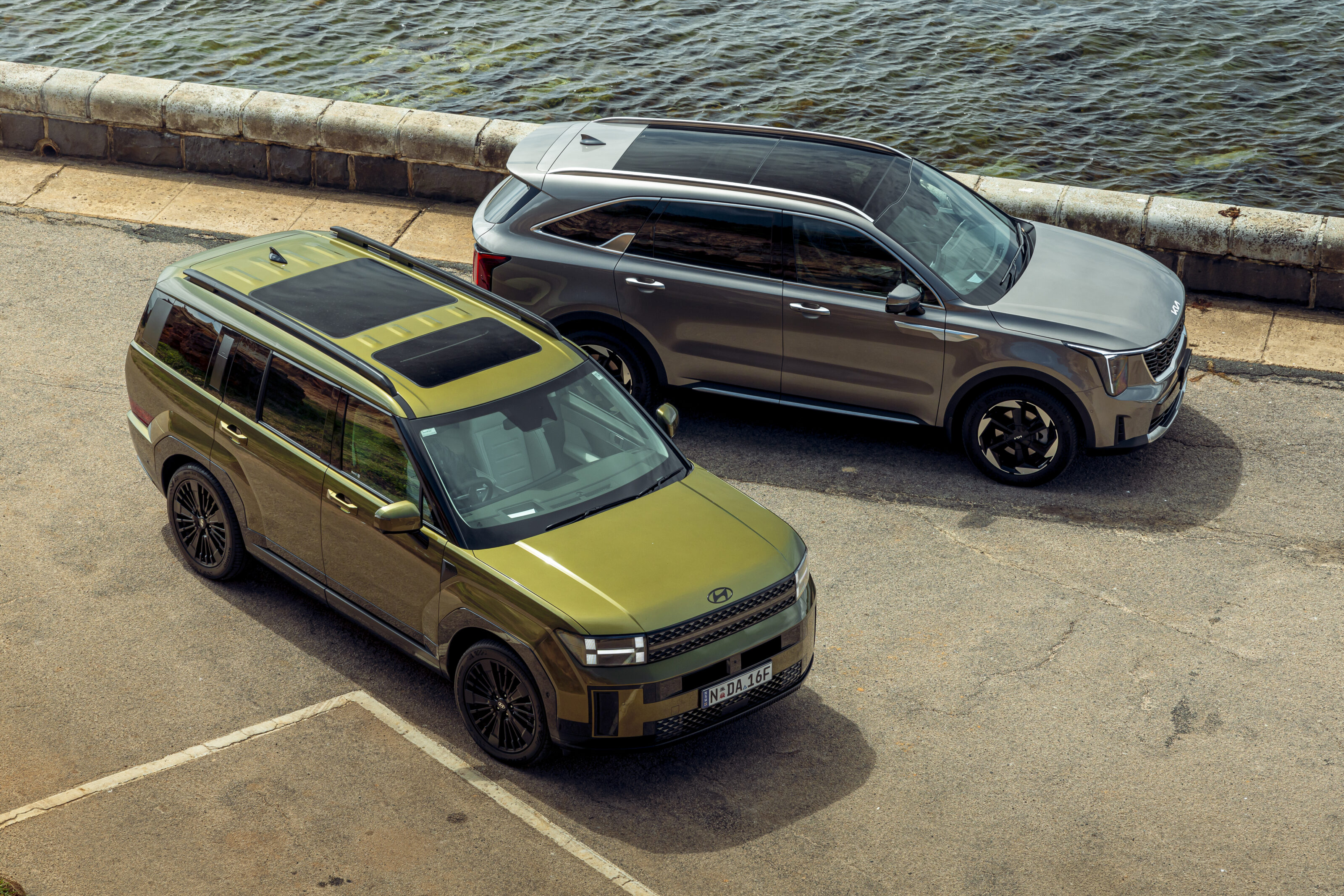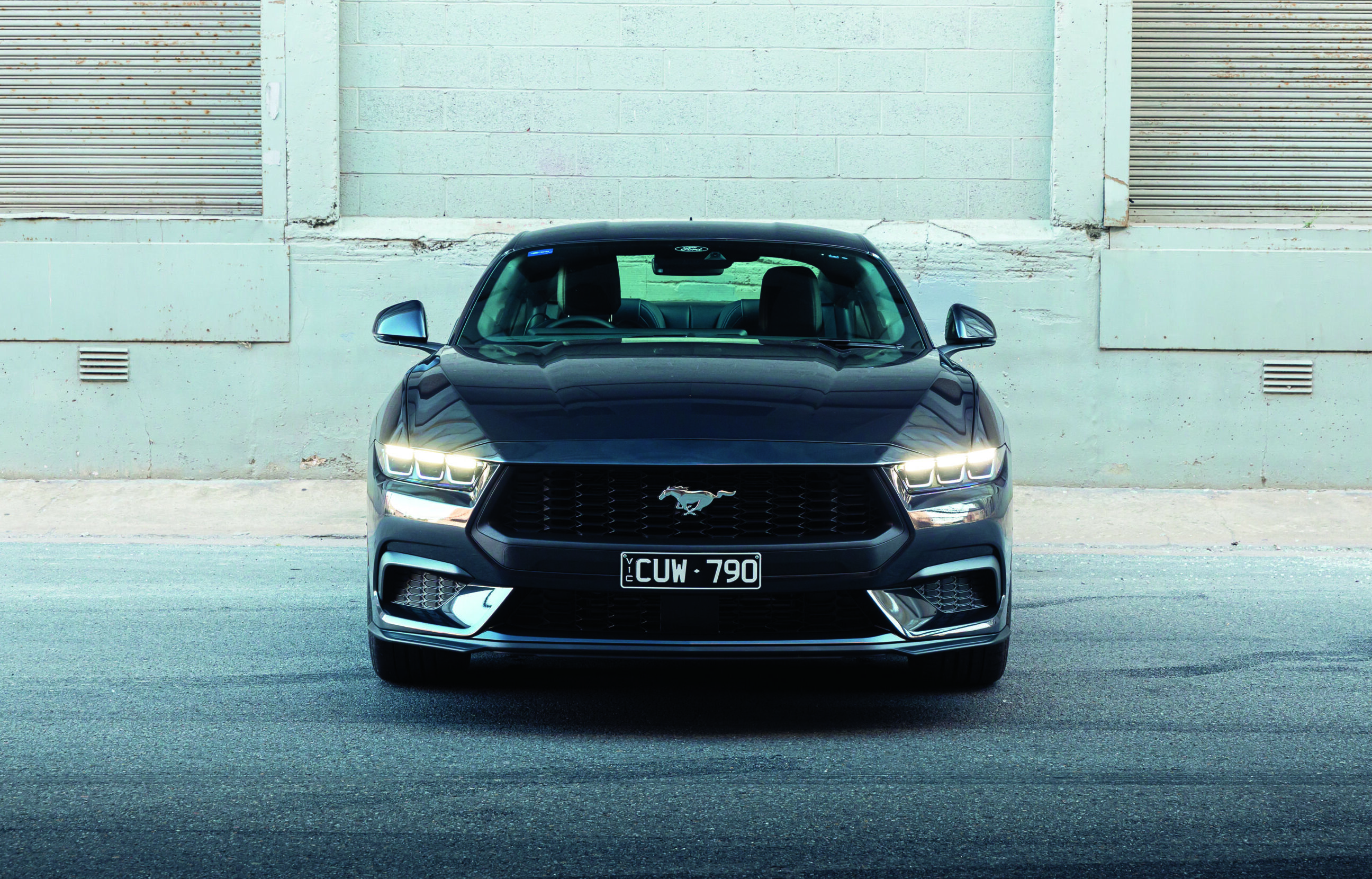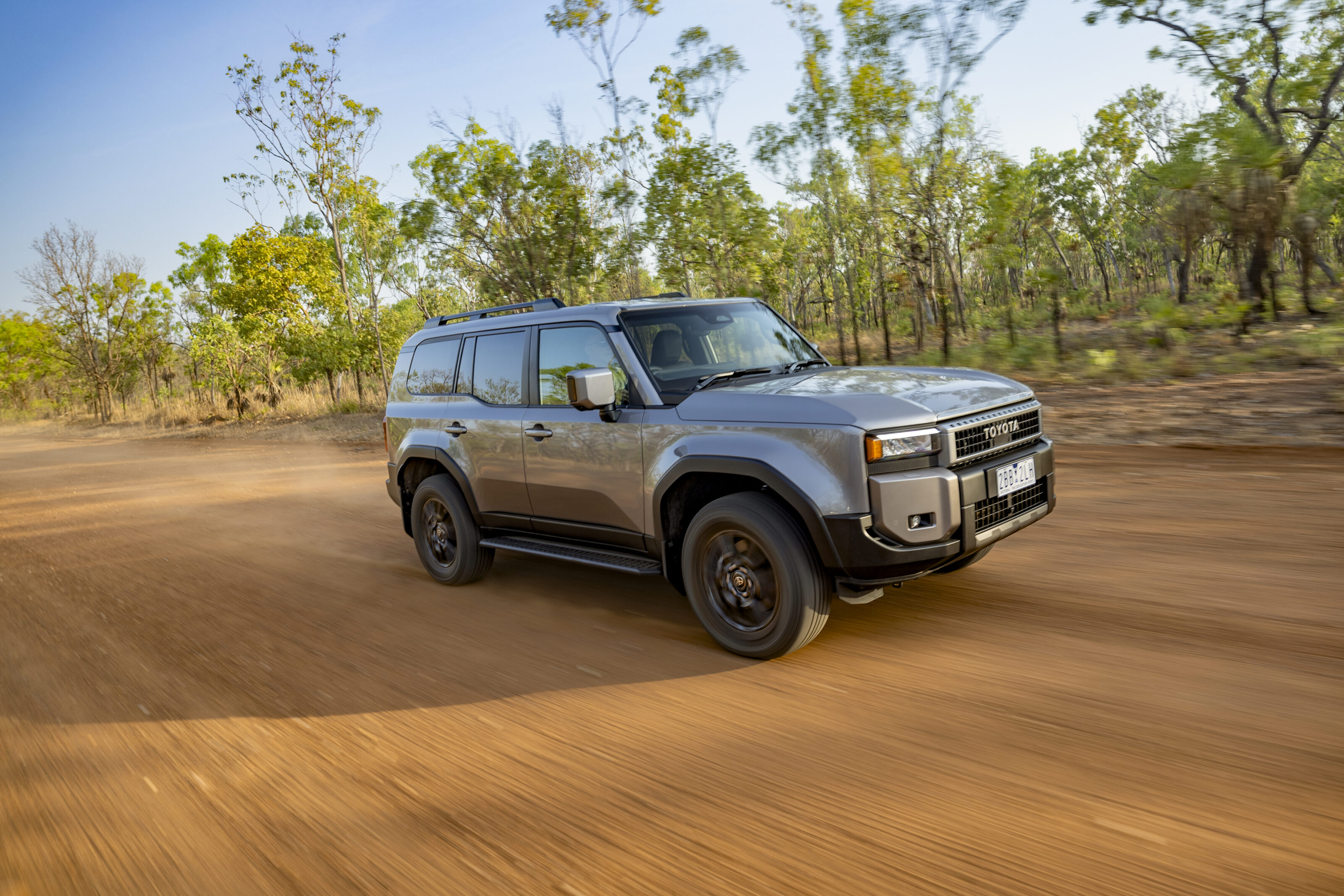
It only just snuck in before Christmas, but the Toyota LandCruiser Prado 250-Series was one of the biggest launches of 2024.
To say a new Prado doesn’t come along every year is an understatement. Its 150-Series predecessor soldiered on for 15 years, but that didn’t stop it from dominating the large SUV segment, adventurous Aussies hoovering them up right until the very end.
The radical design change hides a more evolutionary mechanical package but the new Prado has made huge strides in some areas – and yet is a retrograde step in others.
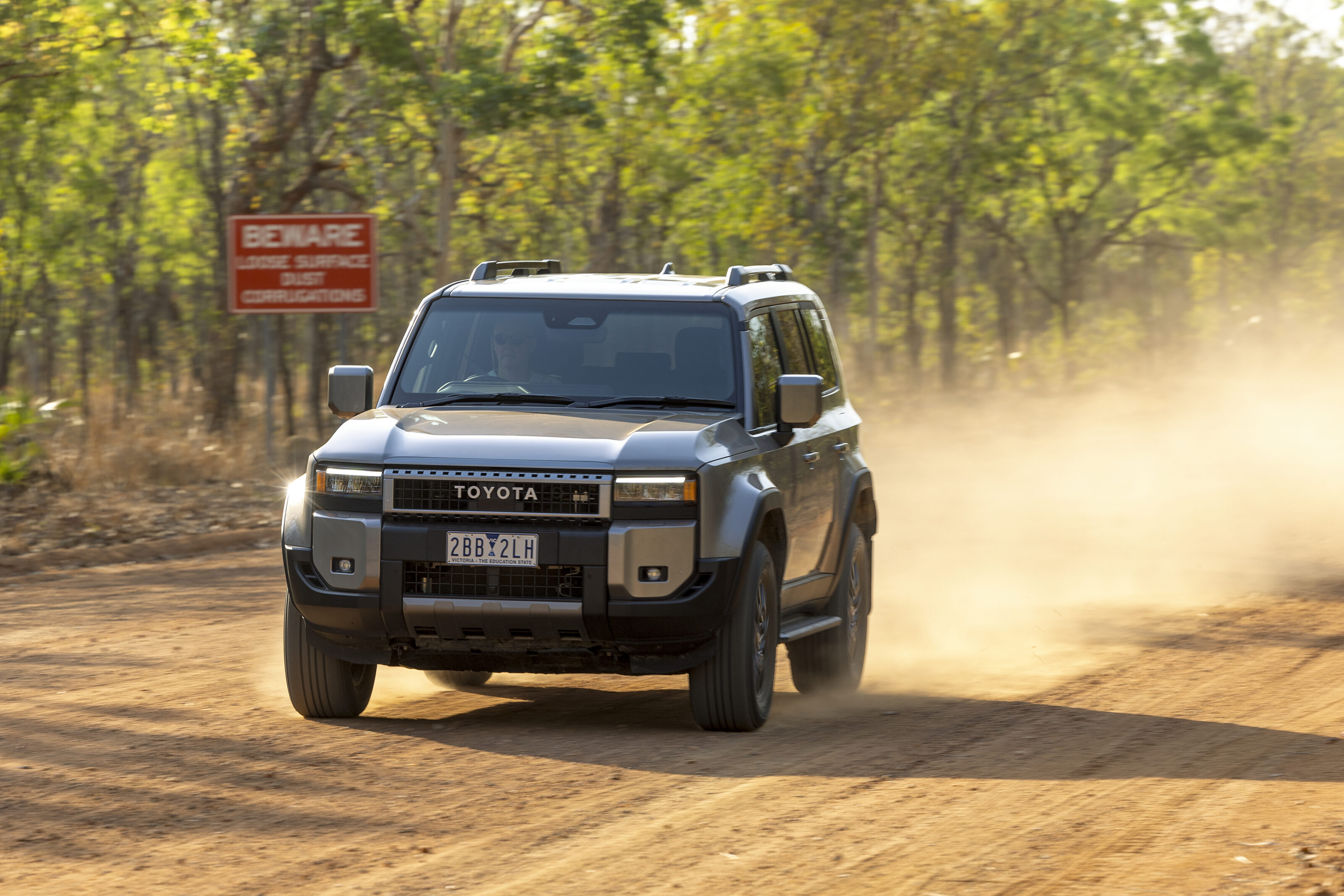
How much is it and what do you get?
The GXL reviewed here is expected to make up the bulk of new Prado sales, but despite sitting just one rung up from the bottom of the range, it isn’t short of equipment. Then again, it does cost $79,990 plus on-road costs, a $10,000 lift over its predecessor.
Under the bonnet the familiar 2.8-litre four-cylinder turbodiesel remains but now with mild-hybrid assistance, as first introduced in the Hilux. It produces 150kW and 500Nm and sends power to all four wheels via an eight-speed automatic gearbox.
On the outside you’ll find 18-inch wheels with 265/65 highway tyres, LED lights, side steps, roof rails and a power tailgate with rear window hatch. Step inside via keyless entry and there’s dual-zone climate control, synthetic leather seat upholstery, heated and ventilated front seats, an eight-way power-adjustable driver’s seat and auto lights and wipers.
Infotainment is handled by a 12.3-inch touchscreen with wireless smartphone mirroring, satellite navigation, AM/FM/DAB+ radio and Toyota Connected Services. There’s also wireless phone charging, five USB-C ports, an HDMI port, a 12v outlet and a 220v outlet in the boot.
Six colours are available: white, black and ebony (that is somehow different to black) as standard and frosted white, dark grey and bronze an extra $675.
Some goodies you forgo by not stretching to the $87,400 (+ORCs) VX include adaptive variable suspension, 20-inch alloys, auto-levelling Bi-LED headlights, a 12.3-inch digital instrument cluster, powered passenger seat and steering column, refrigerated centre console and 14-speaker JBL stereo.
How do rivals compare on value?
The Toyota Prado commands a premium over all its rivals. The GXL nudges range-topping Ford Everest Platinum money ($81,200 +ORC) and sits well clear of other separate-chassis SUVs like the GWM Tank 500 Ultra ($73,990 driveaway), Isuzu MU-X ($67,990 driveaway) and Mitsubishi Pajero Sport GSR ($64,840 +ORCs).

Interior comfort, space and storage
Toyota has made some very strange decisions with the interior packaging of the 250-Series Prado, but let’s deal with the positives first. Up front there are plenty of buttons and dials to contend with – arguably an excess – but familiarity should come easily enough.
You sit high with a commanding view of the road, vision out is good and finding a comfortable driving position will be in reach of most. Everything is chunky and feels appropriately rugged, yet there are soft-touch surfaces rather than hard plastics which gives a more premium feel.
Hop into the centre row and there’s loads of room, separate temperature controls and USB-C ports for charging, while the backrest is helpfully reclinable as the default position is a little upright.
The centre row also tumbles forward for easier access to the third row, but from here it all starts to go a bit wrong. Unfortunately, the Prado’s second row doesn’t slide forward so while the rearmost seats are well equipped with USB-C ports, air vents and cupholders, space is tight, limiting its seven-seat capability to pre-teen children.
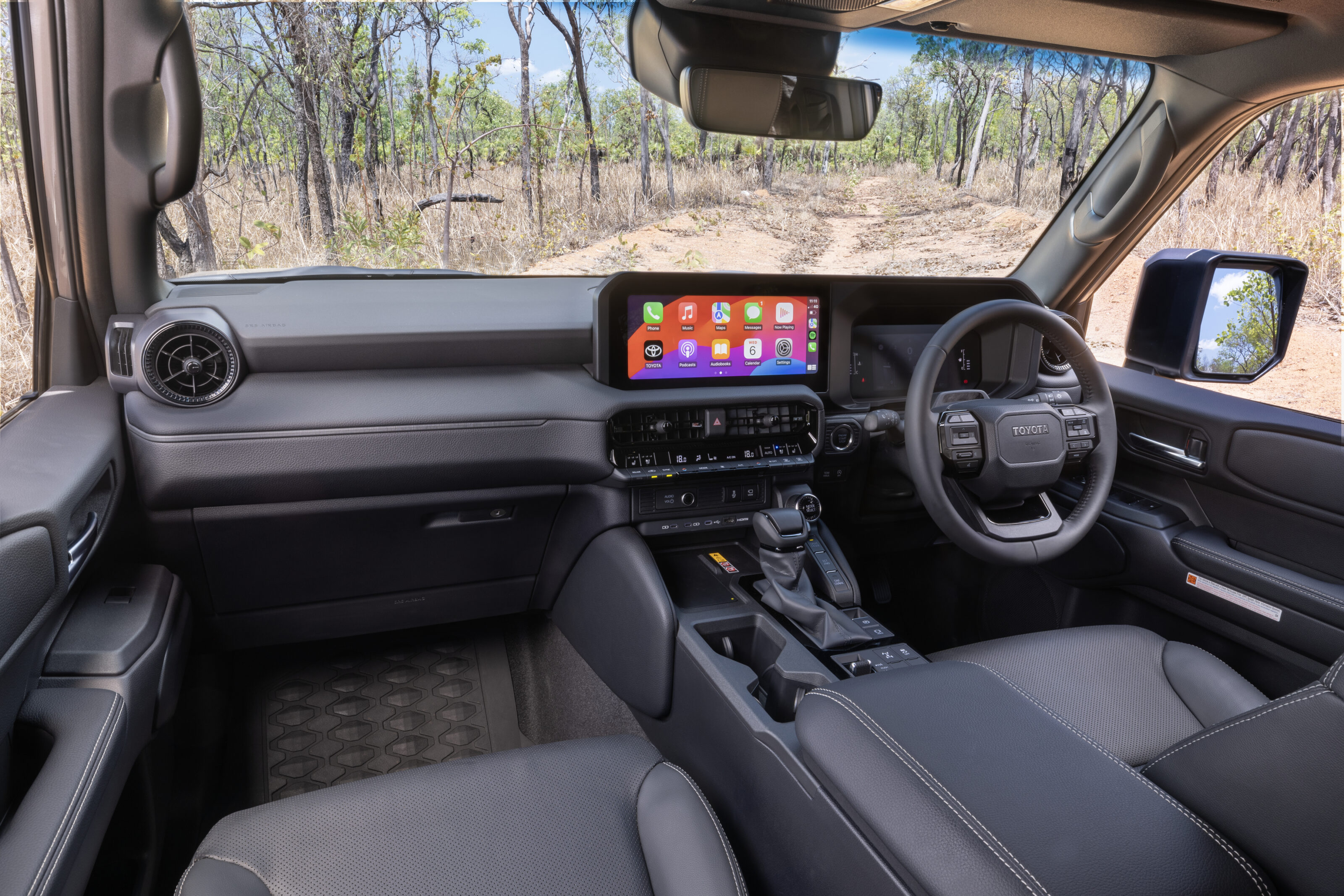
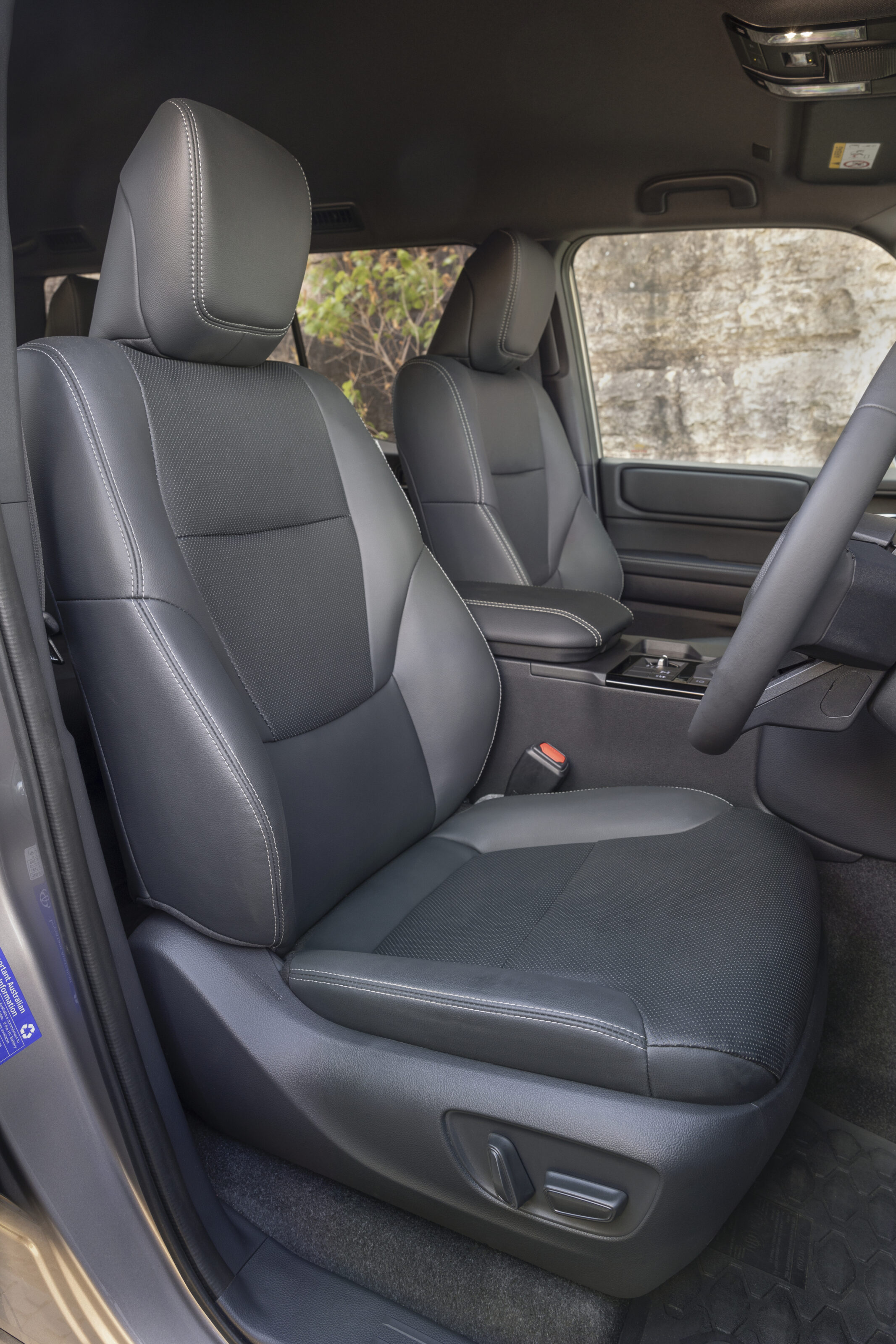
What’s more, because the hybrid Prado’s (which we don’t get yet) battery is intended to live under the boot floor, the third row effectively just sits in the boot even when folded.
Toyota’s specs say there’s still 906 litres on offer but the rear seats heavily compromise the load space and the flimsy plastic bin Toyota has installed behind them to give the illusion of a flat floor does little to improve the situation.
It makes a strong case for the base GX, which is only available in five-seat configuration. What you lose in (questionable) third-row flexibility, you more than make up for in improved luggage space.
What is it like to drive?
The improvements to the latest Toyota Prado are immediately evident from the first turn of the steering wheel. For those familiar with the leaden helm of the previous generation, the lightness of the new electrically assisted steering will be a revelation.
It makes the Prado so much easier to manoeuvre in all circumstances, whether finding a park in town or cruising at 110km/h or picking out the best line off road. Ride comfort is also very good, road imperfections either absorbed by the tyre sidewall and suspension or just pummeled into submission by the Prado’s sheer mass.
This mass works the engine very hard indeed. The mild-hybrid system’s 8.4kW/65Nm motor generator does a fine job of assisting at slower speeds to get the GXL’s 2535kg moving, but you’ll need to plan your open-road overtakes carefully and the jury is out on its towing capabilities.
Speaking of, Toyota has increased the Prado’s towing capacity to a braked maximum of 3500kg and its Gross Combined Mass (GCM) is an impressive 6600kg, but the limitation is the Gross Vehicle Mass (GVM).
For example, if towing 3500kg, the GXL’s payload is limited to 265kg (assuming a 10 per cent downball load) which means you’ll be packing relatively light. The Prado isn’t alone in this regard by any means, but nor does it move the game on and any accessories such as bullbars or roof racks will reduce this further.
Off road the Prado is in its element. Despite a locking rear diff being limited to the Altitude variant, Toyota’s traction control is more than up to most challenges, provided an appropriate set of tyres is fitted.
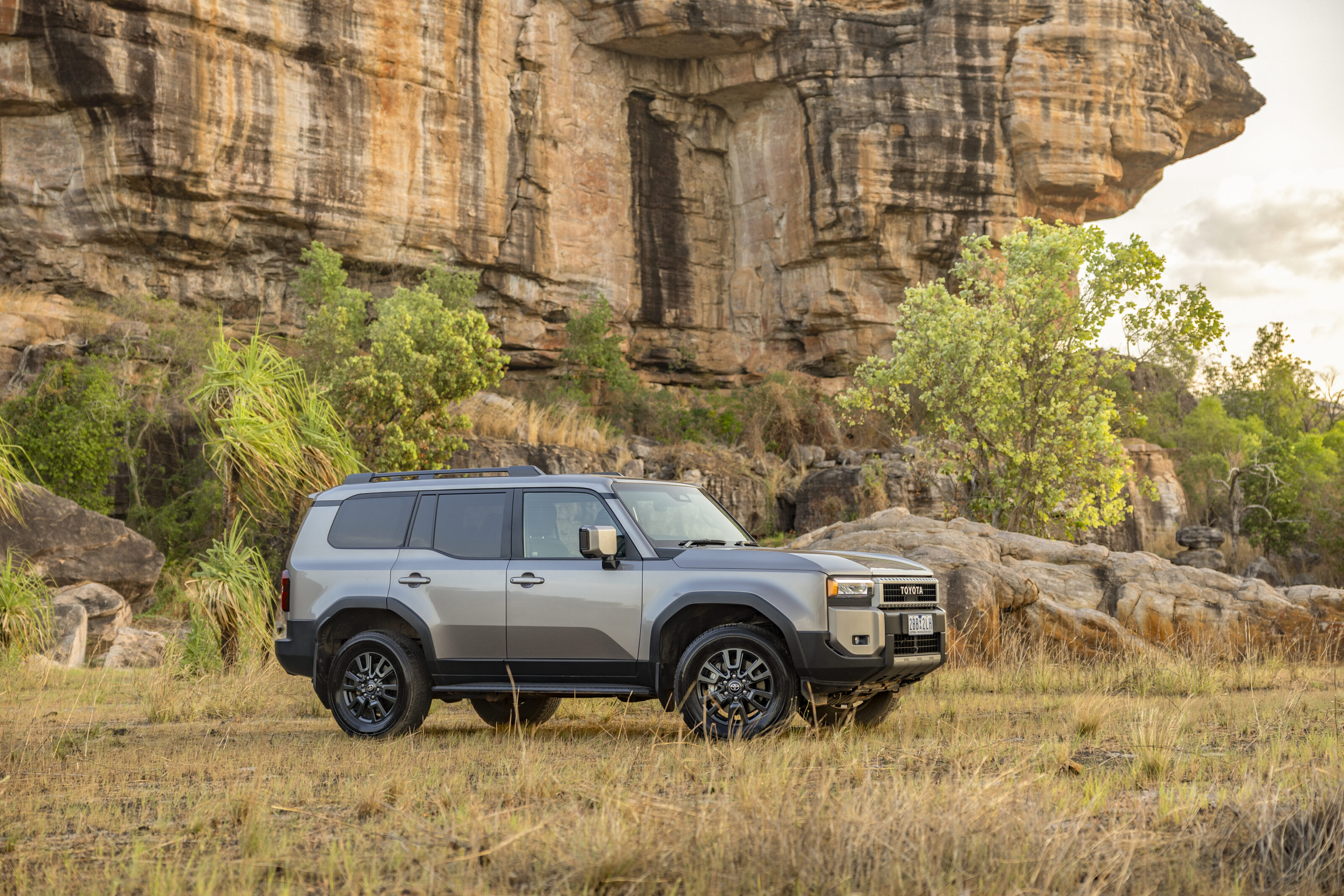
How much does it cost to run?
In our experience the Toyota Prado’s 7.6L/100km combined fuel economy claim is highly optimistic, with its typical thirst more likely to be in the 9s – see earlier point about not much engine pushing a lot of car.
Of note for outback tourers, especially those towing, will be the fuel tank reduction from 150 to 110 litres. Still decent, but you’ll be planning more stops.
The new Prado also requires AdBlue, with Toyota claiming the 17.4L tank will need refilling about every 8000km, which will set you back about $35 at the pump at current prices.
Toyota offers a five-year/unlimited kilometre warranty with an extra two years of driveline cover if you stick to the scheduled servicing, which is required every six months or 10,000km.
The first 10 services are capped at $390 each, but that’s still a hefty $3900 over the first five years. Over the same period, a Ford Everest costs $1591.
If an item covered by warranty fails, towing to the nearest Toyota dealer and a loan car is covered, otherwise Toyota’s roadside assist costs either $99 or $139/year.
How safe is it?
A five-star ANCAP rating was applied to all new Prado variants in December 2024 with scores of 85 per cent for adult occupant protection, 89 per cent for child occupant protection, 84 per cent for vulnerable road user protection and 82 per cent for safety assist. Obviously, with scores like this it has the works in terms of safety equipment, including nine airbags and a list of active acronyms that would make for some terrible Scrabble hands (see below). In general, they’re pretty unobtrusive, save the occasional unnecessary interruption from the lane-keep assist.
- AEB with pedestrian, cyclist, motorcyclist and oncoming vehicle detection
- Intersection collision avoidance
- Active cruise control
- Deceleration assist
- Road sign assist (speed signs only)
- Emergency driving stop system
- Rear cross-traffic alert
- Driver monitor camera
- Emergency steering assist
- Low-speed acceleration suppression
- Curve speed reduction
- Lane trace assist with lane-departure alert
- Auto high beam
- Blind-spot monitor
- Safe exit assist
- Rear parking support brake
Verdict
The 2025 Toyota LandCruiser Prado 250-Series is an enigma. It looks great, has vastly improved road manners, excellent off-road chops and has been brought up to date with the latest safety and in-car technology.
On paper it looks like a slam dunk, but little thought has apparently been put into some important fundamentals. Compromise is the word. The inflexible second row compromises its seven-seat capabilities; the third-row packaging compromises its luggage space; the increased weight compromises its performance, efficiency and payload.
Combine these compromises with a significantly increased price tag and the new Prado is a good car that’s nonetheless underwhelming. The caveat to this is the five-seat GX and Altitude variants will largely solve these packaging issues, while offering better value and greater off-road ability respectively, so we’ll endeavour to bring you further reviews as soon as possible.
Specifications
| Engine | 2755cc 4cyl diesel, dohc, 16v, turbo, mild hybrid |
|---|---|
| Max power | 150kW @ 3000-3400rpm |
| Max torque | 500Nm @ 1600-2800rpm |
| Transmission | 8-speed automatic |
| Weight | 2535kg |
| Economy | 7.6L/100km (claimed) |
| Price | $79,990 |
| On sale | Now |


